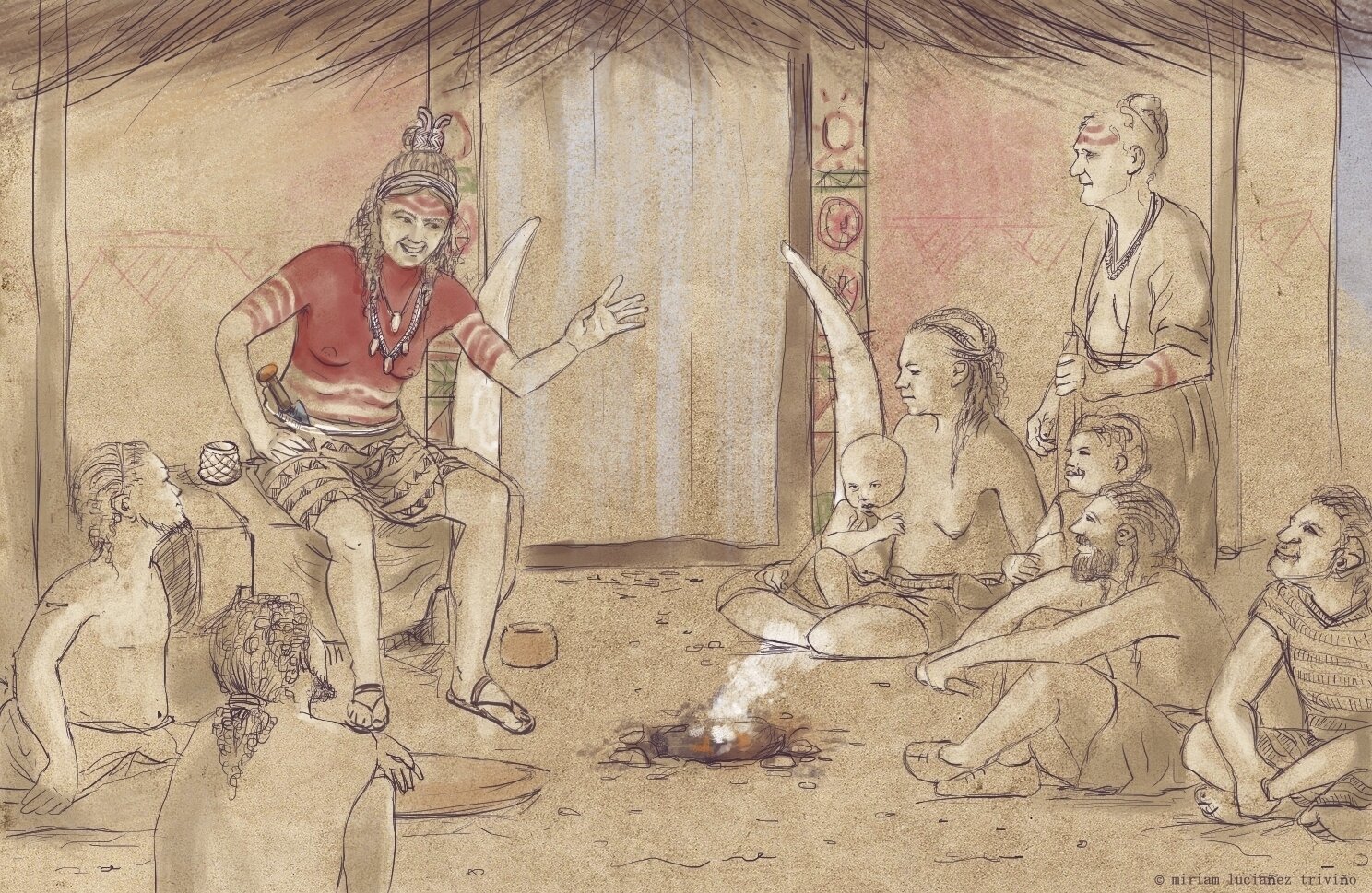
This illustration, provided by the ATLAS research group of the University of Seville in July 2023, showcases “The Ivory Lady,” whose remains were discovered in a tomb in Valencina, Spain. Carbon dating has estimated the tomb to be between 3,200 and 2,200 years old. Initially, archaeologists believed the tomb belonged to a man due to its ornate design.
However, a recent study published in Scientific Reports has revealed that the remains actually belong to a woman. By analyzing the tooth enamel, researchers were able to determine the sex of the individual. This new method of determining sex through tooth enamel analysis, which was developed about five years ago, provides a more reliable approach compared to analyzing poorly preserved skeletal remains.
The burial of the “Ivory Lady” remains shrouded in mystery. Leonardo Garcia Sanjuan, an archaeologist at the University of Seville, stated, “She was buried alone in a tomb with very special artifacts. That shows that she was a special person.” The tomb, located near Spain’s southern coast, was excavated in 2008. Previous assumptions about the tomb being a final resting place for a young man were based on the discovery of valuable objects such as a rock crystal dagger, ivory tusks, ostrich eggshells, and amber. These items suggested a high social status for the individual.
The newfound technique of analyzing tooth enamel chemistry enables the detection of sex differences between males and females. This method can be employed even when full DNA analysis is not feasible. Alison Beach, an historian at the University of St. Andrews, comments, “This research provides one more piece of evidence questioning old historical narratives.” It challenges the notion that men have always held the most power and authority.
Marta Cintas-Pena, an archaeologist at the University of Seville, maintains a comprehensive database of Copper Age burials across the Iberian Peninsula. Out of the recorded 1,723 individuals, the burial of the Ivory Lady stands out prominently. For approximately 250 years after her burial, newer graves were built around her tomb but always maintained a 100-foot (30-meter) buffer zone. Furthermore, around 80 years after her death, the tomb was revisited, and additional objects were placed inside as votive offerings, including the crystal dagger.
With this discovery, researchers gain valuable insights into a society that existed alongside the rise of the Egyptian pharaohs and the construction of the first planned city in Mesopotamia. Katharina Rebay-Salisbury, an archaeologist at the University of Vienna, believes that similar misidentifications may have occurred in other ancient tombs, where researchers assumed the occupant must be a male based on their wealth and prominence. Recent discoveries, such as the decorated Viking warrior buried in Sweden who was proven to be a woman through DNA analysis, demonstrate the need to reevaluate assumptions surrounding ancient tombs.
Denial of responsibility! SamacharCentrl is an automatic aggregator of Global media. In each content, the hyperlink to the primary source is specified. All trademarks belong to their rightful owners, and all materials to their authors. For any complaint, please reach us at – [email protected]. We will take necessary action within 24 hours.

Shambhu Kumar is a science communicator, making complex scientific topics accessible to all. His articles explore breakthroughs in various scientific disciplines, from space exploration to cutting-edge research.

